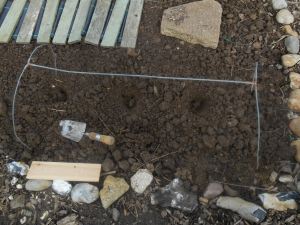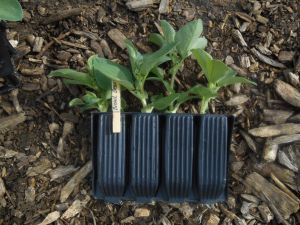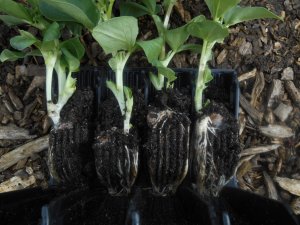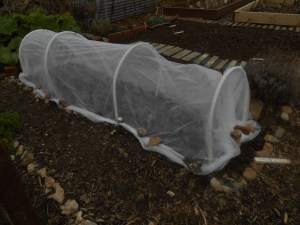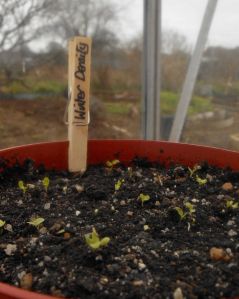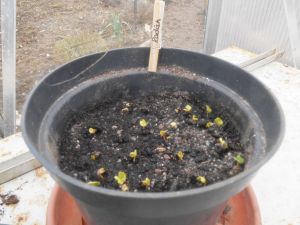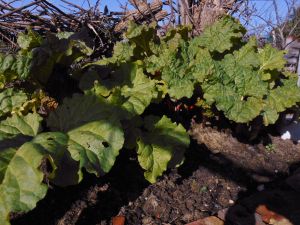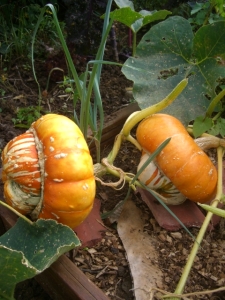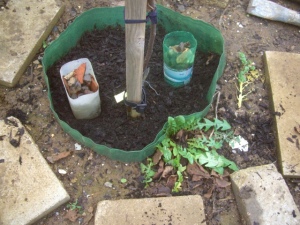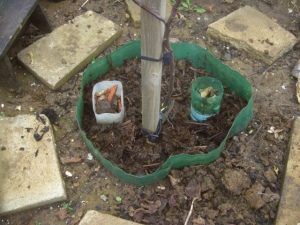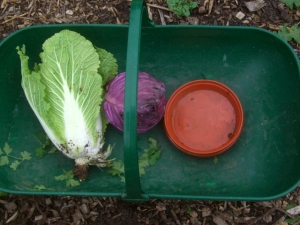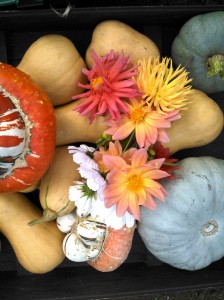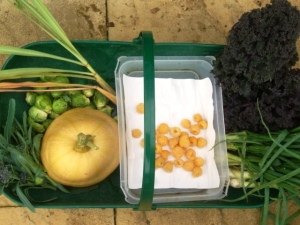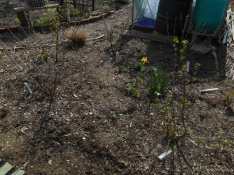 The first workshop of 2014 will take place next Saturday, 29 March – we’re going to be looking at propagating perennial crops and plot #103 was not looking as I would wish it to look!
The first workshop of 2014 will take place next Saturday, 29 March – we’re going to be looking at propagating perennial crops and plot #103 was not looking as I would wish it to look!
To add to the problem, OH has done something to his back. It happened last night, and so he wasn’t available to help with the heavy work today. On my plan was to cover the broad beans and new strawberry plants against tonight’s predicted heavy frost, to weed and mulch the currants in advance of putting up their fruit net in the next fortnight and to repot some of the greenhouse seedlings.
What wasn’t on my plan was to dig up and move the lovage. But when I thought about it, I remembered that one of the problems we had last year was the lovage growing too tall for the fruit cage. It can easily make six feet in a single year!
 So out came the fork and up it came … it sounds so easy, but it was half an hour of back aching work just to dig the whole plant out, then another twenty minutes to dig a new hole to relocate it in the medicinal garden, to divide it into three; one main plant to go back in the ground and two smaller ones (which I had to separate from the parent by wedging a trowel into the root system and hammering it with a mallet) to give away. It had huge roots and I’m really glad I got it out of the ground now, as it must have been competing with the currants for nutrients and they’ll almost certainly do better now it’s not hogging all the goodness in the soil. I’ll bet I’ll be pulling out baby lovage plants for a few years though, as I’m certain I didn’t manage to lift all the roots and although I went back and dug out the broken ones, I’m bound to have missed a few.
So out came the fork and up it came … it sounds so easy, but it was half an hour of back aching work just to dig the whole plant out, then another twenty minutes to dig a new hole to relocate it in the medicinal garden, to divide it into three; one main plant to go back in the ground and two smaller ones (which I had to separate from the parent by wedging a trowel into the root system and hammering it with a mallet) to give away. It had huge roots and I’m really glad I got it out of the ground now, as it must have been competing with the currants for nutrients and they’ll almost certainly do better now it’s not hogging all the goodness in the soil. I’ll bet I’ll be pulling out baby lovage plants for a few years though, as I’m certain I didn’t manage to lift all the roots and although I went back and dug out the broken ones, I’m bound to have missed a few.
Lovage is not much grown now, although it’s an attractive sculptural plant, because not everybody likes the strong ‘celery with a hint of liquorice’ fragrance. Also it’s very rarely eaten these days although it is still used to make a liqueur that was once recommended as being good for the digestion. We grow it to eat with lentils and other pulses in summer as it’s said to have a flatulence reducing effect. We enjoy the flavour too though, so it’s not just medicinal (or social acceptability) in our case! It definitely counts as a crop and if you have space for it on your allotment, can be a useful way to fill an otherwise unused corner as long as you don’t mind dividing it every few years.
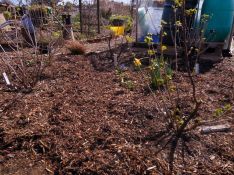 Our local council turns Christmas trees into chippings and deposits them on allotment sites so once I’d hand weeded out all the goose-grass, baby thistles and brambles that had just emerged, I planned to put down a couple of barrowloads to mulch the currants.
Our local council turns Christmas trees into chippings and deposits them on allotment sites so once I’d hand weeded out all the goose-grass, baby thistles and brambles that had just emerged, I planned to put down a couple of barrowloads to mulch the currants.
Then the hail came down in stinging torrents so I took cover in the greenhouse and repotted the kohlrabi while I waited for it to pass. It hailed for long enough for me to do the kohlrabi, and some lettuce and both the lovage!
Two barrows of wet chippings did a good job of mulching the currants, although I might go and get a third barrow in the week. It’s important not to let mulch touch the stem of a plant, as this can soften the bark and weaken the plant, allowing bacteria and viruses to enter, so there’s a clear circle around each plant, then a layer of mulch to trap moisture, limit weed germination and provide some insulation against this March weather which is definitely a case of ‘in like a lamb, out like a lion!’
So we’re ready for next week and although the plot still doesn’t look as I would wish, it’s a lot tidier than it was ….
